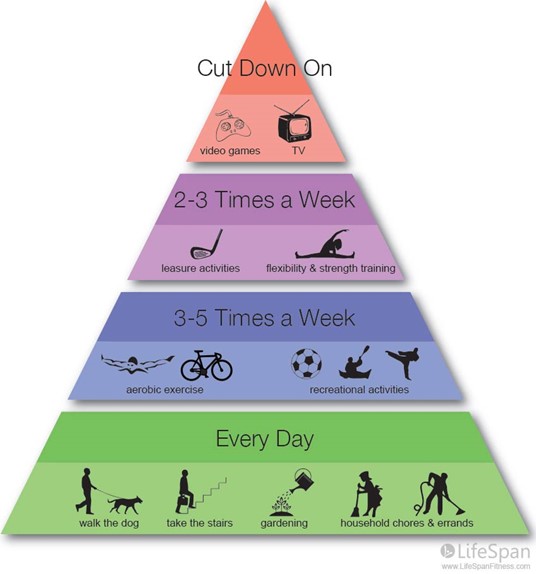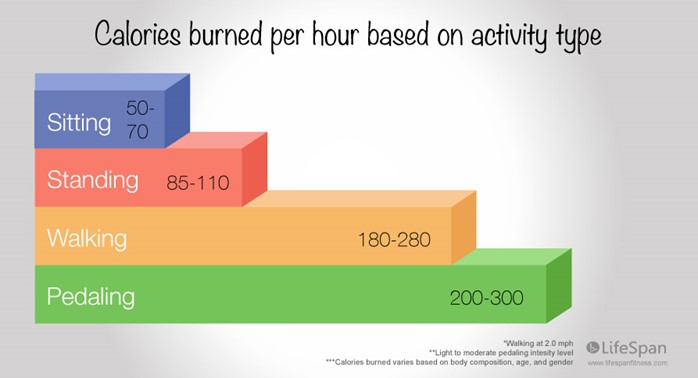You may be forgiven for thinking that an ergonomic aid like a sit stand desk converter is solely for use by people with chronic back, neck, or shoulder issues.
A sit stand desk converter is a basic bit of kit that allows you to raise your entire workstation up to standing height at the flick of a switch or lever. You can buy desks that have this functionality built in, either electronically or mechanically but a converter is ideal when you have a desk that you don’t want to or can’t replace your existing setup. It’s also a lot cheaper.
Unlike a wrist rest or a monitor riser which are entirely commonplace, you are less likely to see sit stand converters on Irish desks. But why?
The fact is that we humans are inherently lazy. We don’t like to exert ourselves unnecessarily, true even of those odd beans that exercise for fun. If there is an option between sitting and standing, realistically most of us will choose the chair.
But if you knew the dangers of sitting, would you choose differently? According to a report from the makers of Leap Sit-Stand Desks sitting all day every day affects every part of your body negatively.
And according to the World Health Organization (WHO), 60 to 85% of the global population do not engage in enough activity, making physical inactivity the fourth leading risk factor for global mortality.
1. Heart
Muscles are less active and therefore burn less fat while a person is seated. Together with higher blood pressure and elevated cholesterol levels, this increases the risk of heart disease. People who sit for more than 8 hours a day double their risk of developing heart disease, compared to those who sit for less than 4 hours a day.
“The idea that standing is better for heart health was first proposed in 1953. A study found that bus conductors who stood all day had half the risk of heart disease-related deaths as their colleagues in the driver’s seats (* Trusted Source). Since then, scientists have developed a much greater understanding of the effects of sitting on heart health, with prolonged sedentary time thought to increase the risk of heart disease by up to 147% (*Trusted Source). It is so harmful that even an hour of intense exercise may not make up for the negative effects of an entire day spent sitting (*Trusted Source). There is no doubt that spending more time on your feet is beneficial for heart health.”
2. Obesity
The fact is that prolonged periods of sitting can slow down your metabolism and promote fat accumulation. By simply standing up intermittently while you work, you’ll instantly decrease your risk of obesity.
In fact, when compared to an afternoon of sedentary work, an equal amount of time spent standing has been shown to burn over 170 additional calories. That’s almost 1000 extra calories burned each week from simply standing at your desk each afternoon. Another study involving 23 office workers found that alternating between standing and sitting every 30 minutes throughout the workday reduced blood sugar spikes by 11.1% on average. (* Trusted Source).
3. Back
Staying seated for long periods of time can cause weight pressure to be unevenly distributed over the spine, leading to spinal problems in the lower back. Multiple studies (and common sense) show that standing desks can dramatically decrease chronic back pain caused by prolonged sitting. For the many Irish people already suffering with back problems, sitting all day is just exacerbating their pain.
4. Mood & Energy Levels
Standing desks appear to have a positive influence on overall wellbeing. In one 7-week study, participants using standing desks reported less stress and fatigue than those who remained seated the entire work day. One study found that standing desks can lower feelings of stress and fatigue, while improving mood and energy levels.
5. Lifespan
Studies have also found a strong link between increased sitting time and early death. This is not surprising given the strong association between sedentary time, type 2 diabetes, and heart disease. A review of 18 studies found those who sit the most are at a 49% greater risk of dying early than those who sit the least. It is estimated that reducing sitting time to 3 hours per day can raise the average life expectancy by two years.
6. Poor Circulation
Remaining seated for too long may result in swollen ankles and varicose veins caused by fluids sinking down into the legs.
7. Muscle Problems
If you stay seated all day, your leg muscles and gluteus muscles will become inactive, thus reducing your ability to sit up straight.
8. Brain Activity
(Most worryingly) If you stay fixed in one position, insufficient oxygen rich blood will be pumped around the body causing brain function to slow down.
Most companies believe that advising their employees to get up and move around every couple of hours or conducting an annual ergonomic assessment of their work areas will offset these dangers. Unfortunately, that’s not true. While advice like this should be heeded and your workstation should be regularly ergonomically assessed, these things alone cannot possibly provide enough benefits to negate the risks of being in a stationary sitting position for up to 8 hours each day.

How to Stand (We know you know but still…)

Calculate the total amount of time you spend sitting with Irish Heart Health’s calculator.
https://irishheart.ie/campaigns/escape-your-chair/calculator/
The Irish Heart Foundation is asking people to take on a challenge for one month and break-up their sitting time during the working day. Sign up here.
https://irishheart.ie/campaigns/escape-your-chair/escape-your-chair-challenge/


References
https://irishheart.ie/news/office-workers-unaware-of-the-dangers-of-sitting/
https://irishheart.ie/campaigns/escape-your-chair/
https://www.stacked.ie/leap-desks-stacked-office-wellbeing/
https://www.lifespanfitness.com/workplace/resources/articles/health-risks-of-a-sedentary-lifestyle
https://www.lifespanfitness.com/workplace/resources/articles/standing-desk-benefits-vs-sitting
https://www.healthline.com/nutrition/7-benefits-of-a-standing-desk#TOC_TITLE_HDR_2






